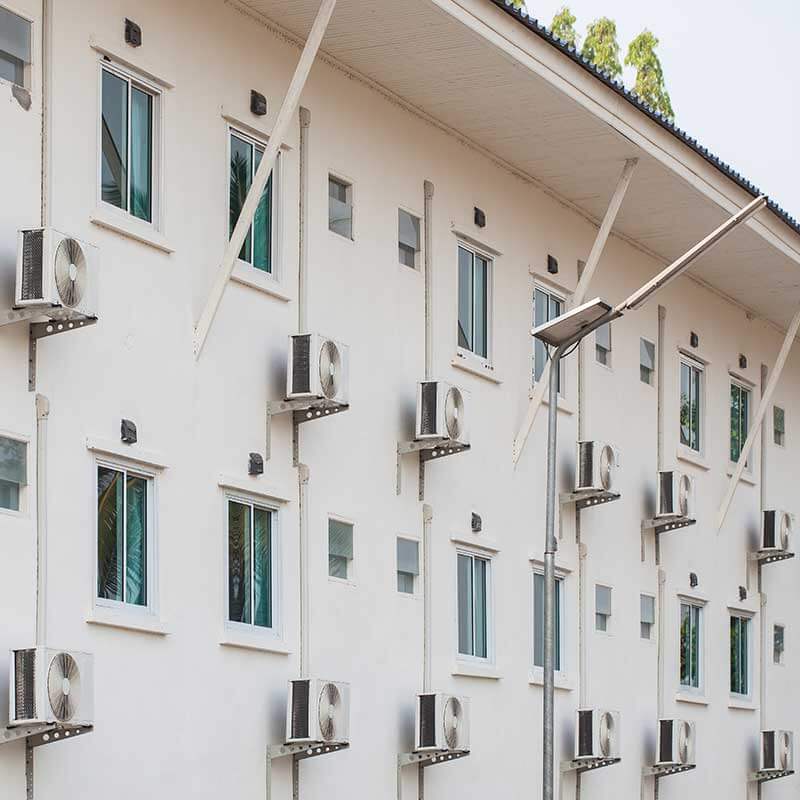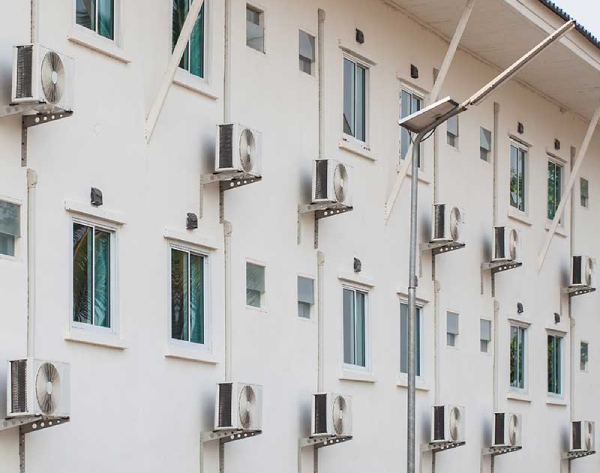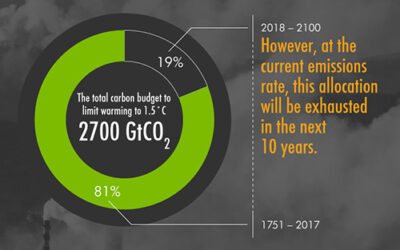Cooling as a developmental need in human habitat


Over the past decade, rising temperatures have added to the enormity of India’s developmental challenges. Rising temperatures present a grave danger to both food (nutrition) security and public health, making access to cooling a necessity for all sections of the population. On the one hand, nearly 75% of the labour force (some 380 million people) in India is exposed to heat-related stress, the average loss in daylight working hours put between 2.5% and 4.5% of the GDP at risk annually . On the other, rising temperatures also significantly amplify the drivers of food and nutrition insecurity. There is a predicted 62% increase in severe stunting in South Asia by 2050. One of the causes of food and nutrition in India is the poor, fragmented cold-chain infrastructure. The estimated monetary value of the overall post-harvest loss in India is around Rs.92,000 Crores per annum. Most of this loss of food produce could be avoided by appropriate on-farm handling and efficient logistics. Parallel to ensuring nutrition security is the challenge to sustain and maintain the world’s largest immunization network set-up by India. One of the biggest challenges to the government and public health agencies is to prevent vaccines wastage, according to some estimates, 25% of vaccines are lost even before reaching the doctors and patients, primarily due to insufficient immunization supply cold chain in India. Cooling thus doesn’t remain a mere aspiration but rather becomes a compelling developmental need. The need for cooling came to forefront during the COVID-19 outbreak and the subsequent lockdowns when the larger population spent time indoors in their houses, the supply chain was impacted due to the lockdown and the need for a robust vaccine delivery network to fight the pandemic.
The seminal work India Cooling Action Plan (ICAP) published by MoEF&CC in 2019 took a holistic, cross-sectoral view on cooling and proposed ratcheting-up of efforts under the existing government initiatives and importantly urged increased activity on new technologies, approaches and demand-groups. AEEE alongwith CEEW and TERI recently became a part of a consortium of organisations, SHEETAL (Alliance for a Sustainable Habitat, Energy Efficiency and Thermal Comfort for All) working towards implementing the ICAP recommendations. The consortium proposes a multidisciplinary, integrated approach along with technical solutions to enhance access to cooling across multiple target sectors. As a part of the consortium, AEEE aims to work towards the goal of achieving thermal comfort in affordable housing, ratcheting up the MEPS level and development of labels for cooling related appliances, and supporting the development of sustainable horticulture cold chain in India. The program will focus on activities that complement the existing policy framework to deliver a holistic approach to achieve more equitable access to cooling.
Thermal Comfort in Housing
Over the past decade, India has witnessed a record heat waves, in frequency and all-time high temperatures that cost more than 6,000 lives. The impact of heatwaves is sometimes felt more acutely in cities because of urban heat island and many economically weaker sections (EWS), low income group (LIG) and slum dwellings not able to provide livable thermally comfortable conditions during peak summer. Rising temperatures in the urban centers not only increase the demand for cooling but have moderate to severe negative impacts on public health, workforce productivity and air quality which disproportionately affect the urban lower-income groups and economically weaker sections living in dwelling units which have high density and lower built-up area. The impacts of rising temperatures are felt much more intensely in situations of lockdown, where the majority of the urban population end up spending their time indoors. In the case of slums, the situation is even worse and calls for the construction of houses to provide basic amenities, including thermal comfort. AEEE’s approach to adopt energy efficiency building codes in buildings (to enhance occupant’s thermal comfort) promotes a multidisciplinary, integrated approach with technical solutions to ensure affordability and inclusiveness of active and passive cooling solutions.
Cold chain: Horticulture
While on the one hand the farmers, industries and the government are maximizing their efforts to ensure minimum impact on the supply of food in the country during the nationwide lockdown, on the other, it brought to the forefront the unparalleled role cooling plays in the supply chain forming the backbone of our modern-day food chain. Temperature controlled supply-chain includes pack-houses, cold storages and reefer vehicles; these elements of the supply chain facilitate the movement of fresh and nutrition locked food produce to the end consumers and minimize losses especially as temperatures start to soar in most part of the country. The ICAP estimates that around 97% of pack-houses, 91% ripening chambers and 85% of refer vehicles required for India’s demand in 2037-38 are yet to be built. AEEE sees this gap as an opportunity to channelize the forthcoming investment in cold-chain towards achieving sustainability and resilience in operation to ensure a robust and inclusive climate-friendly delivery system ensuring food security even for the most vulnerable socioeconomic groups in the country.
Cold Chain: Vaccines
While humanity awaits the discovery of a vaccine against COVID-19, it also calls for the government, philanthropic and private sector to join forces in strengthening the delivery chain of vaccines. Despite running the biggest immunization network in the world, India’s existing network does not achieve 100% coverage. Owing to the characteristics of various vaccines, cooling becomes the most important part of the delivery network at all scales: starting from the manufacturer, the storage units at regional and district levels to the last mile delivery mechanism of the paramedical staff. Existing infrastructure has been favourable and effective when the time-span of program implementation is sufficiently large. COVID 19 pandemic brings us a situation, where India must possibly vaccinate over a billion people within a time span of less than one year. Therefore, it is not only a definite and urgent case for strengthening and expanding the existing capacity of the delivery network but also calls for innovative and disruptive solutions which could promote timely delivery to the entire population of India irrespective of their locational geography and socioeconomic accessibility through the adoption of climate-friendly and energy-efficient supply chain.
This blog has been written by Senior Research Associate, Anukriti Pathak, with inputs from Program Lead (Building & Appliances) Tarun Garg.




